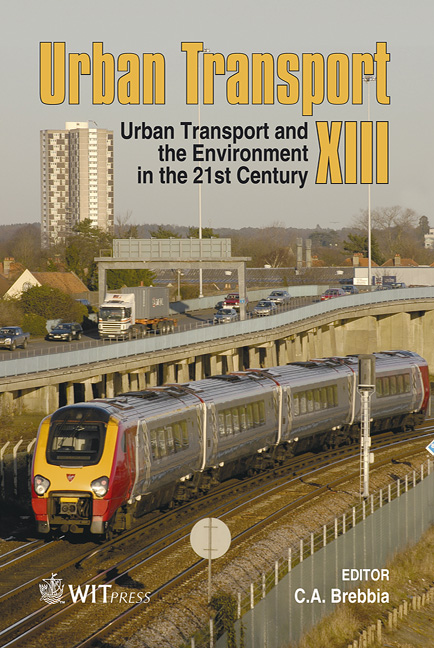Statistical Dwell Time Model For Metro Lines
Price
Free (open access)
Transaction
Volume
96
Pages
10
Published
2007
Size
528 kb
Paper DOI
10.2495/UT070221
Copyright
WIT Press
Author(s)
I. Martínez, B. Vitoriano, A. Fernández & A. P. Cucala
Abstract
Traffic simulation models in metro lines are widely used in predictive control algorithms for traffic regulation and robustness analysis of timetables. The simulation results are highly dependent on the uncertainty modelling. The two main parameters in the simulation models are running times and dwell times. In lines operated with ATO systems (Automatic Train Operation), running times are more deterministic than random (consequence of control actions), while dwell times show a higher stochastic behaviour due to the influence of passengers and drivers. Typically, simulation models do not include a realistic modelling of dwell time uncertainty, and the confidence on results is affected. This paper is focused on the stochastic component of dwell times in order to obtain a realistic model suitable for traffic simulation of metro lines. For this purpose, several statistical studies have been developed considering peak and off-peak hours, incidences, relations with other operation variables, etc. Models have been obtained and validated using data of different days and Metro de Madrid lines. Keywords: traffic simulation models, dwell time, stochastic component. 1 Introduction Simulation models of metro lines are used in predictive control algorithms for the real-time regulation of trains, and in the robustness analysis of train timetables. The two main variables in these models are the running time between stations and the dwell time. In metro lines equipped with ATO (automatic train operation) the running times present, in general, less variability than the dwell times, and they depend mainly on the control commands and technical restrictions. On the other hand, the dwell times are random processes that depend on the number and behaviour of the passengers as well as the action of closing
Keywords
traffic simulation models, dwell time, stochastic component.





